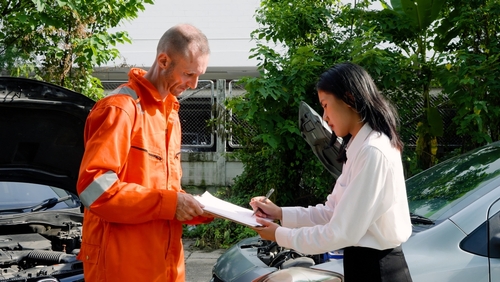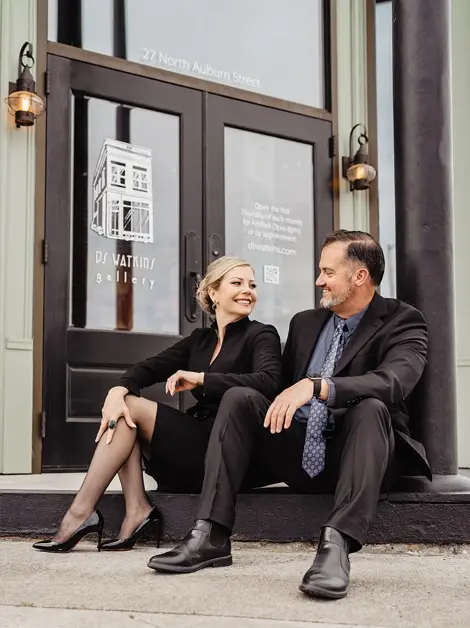Your Accident Wasn’t Entirely Your Fault—Now What?
You’re replaying the accident over and over in your mind. Maybe you were going a few miles over the speed limit, or perhaps you glanced at your phone for just a second. The other driver ran a red light, but you keep wondering: does your small mistake mean you can’t recover anything? The good news is that in Washington State, being partially at fault doesn’t automatically destroy your case. Understanding how comparative fault works could mean the difference between walking away with nothing and receiving substantial compensation for your injuries.
💡 Pro Tip: Document everything about the accident immediately, including road conditions, weather, and any statements made by other drivers—even minor details can significantly impact how fault percentages are assigned.
Thinking you’re partially at fault shouldn’t stop you from seeking the compensation you might deserve. Washington’s comparative fault laws allow you to recover damages even if you’re not blameless. Let Telaré Law guide you through this process with steadfast dedication. Reach out today at 509-461-9156 or contact us to discuss the next steps on your path to recovery.
Washington’s Comparative Fault System Works in Your Favor
Washington State transformed its approach to accident liability in 1973 when it implemented the comparative fault system under RCW 4.22.005, moving away from the harsh contributory negligence rules that previously barred recovery for anyone even slightly at fault. This means that even if you’re found to be 80% responsible for an accident with $10,000 in damages, you can still recover 20% of your damages, or $2,000. A car accident lawyer in Richland can help you understand exactly how this applies to your specific situation and work to minimize your assigned fault percentage.
The pure comparative fault system in Washington ensures that the sum of all fault percentages attributed to at-fault parties must equal exactly 100%. This mathematical precision matters because every percentage point of fault assigned affects your potential recovery. For instance, if you’re found 30% at fault for an accident with $100,000 in damages, you can still recover $70,000. This rule applies regardless of prior legal doctrines like last clear chance, giving accident victims more opportunities for fair compensation than in many other states.
💡 Pro Tip: Keep a detailed journal of how your injuries affect your daily life—this documentation can help demonstrate the full extent of your damages and potentially reduce your assigned fault percentage by showing the severity of the other party’s negligence.
The Step-by-Step Process After a Partial-Fault Accident
Understanding what happens after an accident where you share some fault helps you prepare for the road ahead. The process typically unfolds over several months, and knowing each stage allows you to make informed decisions about your case. According to WSDOT crash data, proper documentation from the initial police report becomes crucial evidence in determining fault percentages, as these reports include essential details like date, time, location, contributing circumstances, and weather conditions.
- Immediate aftermath (0-48 hours): Seek medical attention, file police report, document scene with photos and witness information
- Initial investigation (1-4 weeks): Insurance companies begin their investigation, analyzing crash records that contain data from Police Traffic Collision Reports
- Fault determination (1-3 months): Insurance adjusters and attorneys negotiate fault percentages based on evidence, with excessive speed being identified as a top cause of collisions in 2024
- Settlement negotiations (3-6 months): Your attorney negotiates for the lowest possible fault percentage while maximizing your damage recovery
- Resolution or litigation (6-24 months): Most cases settle, but some proceed to trial where a jury determines exact fault percentages
💡 Pro Tip: Request your crash report through the WSDOT portal immediately after it becomes available—reviewing it early allows you to identify and address any errors that could unfairly increase your fault percentage.
How a Car Accident Lawyer in Richland Fights for Your Maximum Recovery
Even with partial fault, you have options for recovering compensation. The key lies in building a strong case that accurately represents the true fault distribution. A car accident lawyer in Richland understands the nuances of Washington’s comparative fault system and knows how to present evidence that minimizes your responsibility while highlighting the other driver’s negligence. Telaré Law has extensive experience handling these complex cases, using crash reconstruction, witness testimony, and thorough investigation to ensure fault percentages reflect what actually happened.
Your attorney will also navigate the complexities of RCW 4.22.070, which abolished joint and several liability in most cases back in 1986. This means each defendant typically pays only their proportionate share of damages. However, if you’re found to be fault-free, all defendants become jointly and severally liable for their combined shares. This distinction can significantly impact your recovery, especially in multi-vehicle accidents where multiple parties share responsibility.
💡 Pro Tip: Be completely honest with your attorney about any role you may have played in the accident—they can better protect your interests when they know all the facts upfront.
Common Scenarios Where Partial Fault Doesn’t Mean Total Loss
Real-world accidents rarely involve just one person making all the mistakes. Consider work zone accidents, where 96% of people hurt are drivers, their passengers, or passing pedestrians—not just road crews. These complex scenarios often involve multiple contributing factors, from construction zone design to driver behavior. Your minor mistake, like momentary distraction, might pale in comparison to another driver’s reckless speeding through a construction zone. Working with a Richland car accident attorney who understands these nuances can mean the difference between accepting an unfair fault assignment and receiving proper compensation.
Multi-Vehicle Collisions and Shared Responsibility
Multi-vehicle accidents present unique challenges in fault determination. Washington law recognizes that liability can be distributed among several parties, with each defendant’s liability being several only, meaning they pay only their proportionate share. However, special rules apply when parties act in concert or in master/servant or principal/agent relationships—in these cases, joint and several liability is retained. For example, if a delivery driver causes an accident while working, both the driver and the employer might share joint liability. Understanding these exceptions helps maximize your recovery potential.
💡 Pro Tip: In multi-vehicle accidents, document every vehicle’s position and damage—sometimes the car that hit you was pushed by another vehicle, shifting primary fault to a different driver.
Protecting Your Rights When Insurance Companies Blame You
Insurance companies often try to shift more blame onto accident victims to reduce their payout obligations. They might claim you were distracted, speeding, or failed to take evasive action—even when evidence suggests otherwise. The Washington Traffic Safety Commission maintains detailed dashboards tracking various crash factors, including specific data on speed, distraction, and seatbelt use among drivers. This official data can sometimes contradict an insurance company’s narrative about accident causation. A Washington comparative negligence law attorney knows how to counter these tactics using objective evidence and traffic safety data.
Evidence That Reduces Your Fault Percentage
Strong evidence makes the difference between accepting unfair blame and proving the true fault distribution. Traffic accident statistics, available quarterly for each county in Washington State, can establish patterns showing the other driver’s behavior was more dangerous than yours. Dashboards maintained by WTSC for specific crash types, including distracted driving and impaired driving incidents, provide context for your accident. Additionally, surveillance footage, vehicle computer data, and witness statements all help paint an accurate picture of what really happened. Even small reductions in your fault percentage can mean thousands more in recovery.
💡 Pro Tip: Request traffic camera footage immediately after your accident—many systems only store recordings for 30 days before automatic deletion.
Frequently Asked Questions
Understanding Your Rights After a Partial-Fault Accident
Many accident victims hesitate to pursue claims when they believe they share some blame. This hesitation often stems from misunderstanding Washington’s comparative fault laws. The following questions address the most common concerns people have when facing a partial fault car accident claim in the Kennewick area.
💡 Pro Tip: Write down all your questions before meeting with an attorney—having a prepared list ensures you get all the information you need to make informed decisions.
Moving Forward with Your Case
Taking action after a partial-fault accident requires understanding both the legal process and your options for recovery. These questions will help clarify what to expect as you pursue compensation for your injuries and damages.
💡 Pro Tip: Start gathering evidence immediately, even if you’re unsure about pursuing a claim—documentation becomes harder to obtain as time passes.
1. Can I still win my case if I’m more than 50% at fault for the accident?
Yes, Washington follows a pure comparative fault system, which means you can recover damages even if you’re 99% at fault. Your compensation will be reduced by your percentage of fault, but you won’t be completely barred from recovery like in some other states. For example, if you’re 70% at fault with $50,000 in damages, you can still recover $15,000.
2. How does a Richland Washington Auto Accidents lawyer determine my fault percentage?
Fault determination involves analyzing multiple factors including police reports, witness statements, physical evidence, traffic laws, and accident reconstruction. Your lawyer will examine speed estimates, road conditions, vehicle damage patterns, and any traffic violations. They’ll also review relevant WSDOT crash data to establish typical accident patterns and challenge unfair fault assignments.
3. What if the other driver and I disagree about who was more at fault?
Disagreements about fault are common and expected. Your Richland personal injury lawyer will build a case using objective evidence to support your version of events. If negotiations fail, a jury will ultimately decide fault percentages based on the evidence presented at trial. The law requires that all fault percentages must add up to exactly 100%, ensuring a fair distribution of responsibility.
4. How long do I have to file a Richland Washington Auto Accidents lawsuit if I was partially at fault?
Washington’s statute of limitations for personal injury claims is generally three years from the date of the accident, regardless of fault percentages. However, waiting too long can make evidence harder to gather and witnesses harder to locate. Starting your case early gives your attorney more time to build strong arguments that minimize your fault percentage.
5. Will my partial fault affect how much I pay in attorney fees?
Most personal injury attorneys work on contingency, meaning their fee is a percentage of what you recover, not what you could have recovered without fault. If your fault reduces your recovery from $100,000 to $70,000, your attorney’s fee is calculated on the $70,000 you actually receive. This aligns your attorney’s interests with yours in minimizing your fault percentage.
Work with a Trusted Auto Accidents Lawyer
Navigating a car accident case with partial fault requires deep understanding of Washington’s comparative negligence laws and proven strategies for minimizing fault assignments. The right legal representation can mean the difference between accepting an unfair settlement and recovering the full compensation you deserve under the law. When choosing representation, look for attorneys with extensive experience handling complex fault scenarios and a proven track record of maximizing client recoveries even in challenging partial-fault cases. Your attorney should thoroughly investigate your accident, challenge unfair fault assignments, and fight for every dollar of compensation available under Washington law.
Don’t let partial fault be a roadblock to your rightful compensation. Washington’s comparative fault laws are on your side. Connect with Telaré Law to navigate this path with confidence. Give us a ring at 509-461-9156 or contact us for a thoughtful discussion about your situation.


